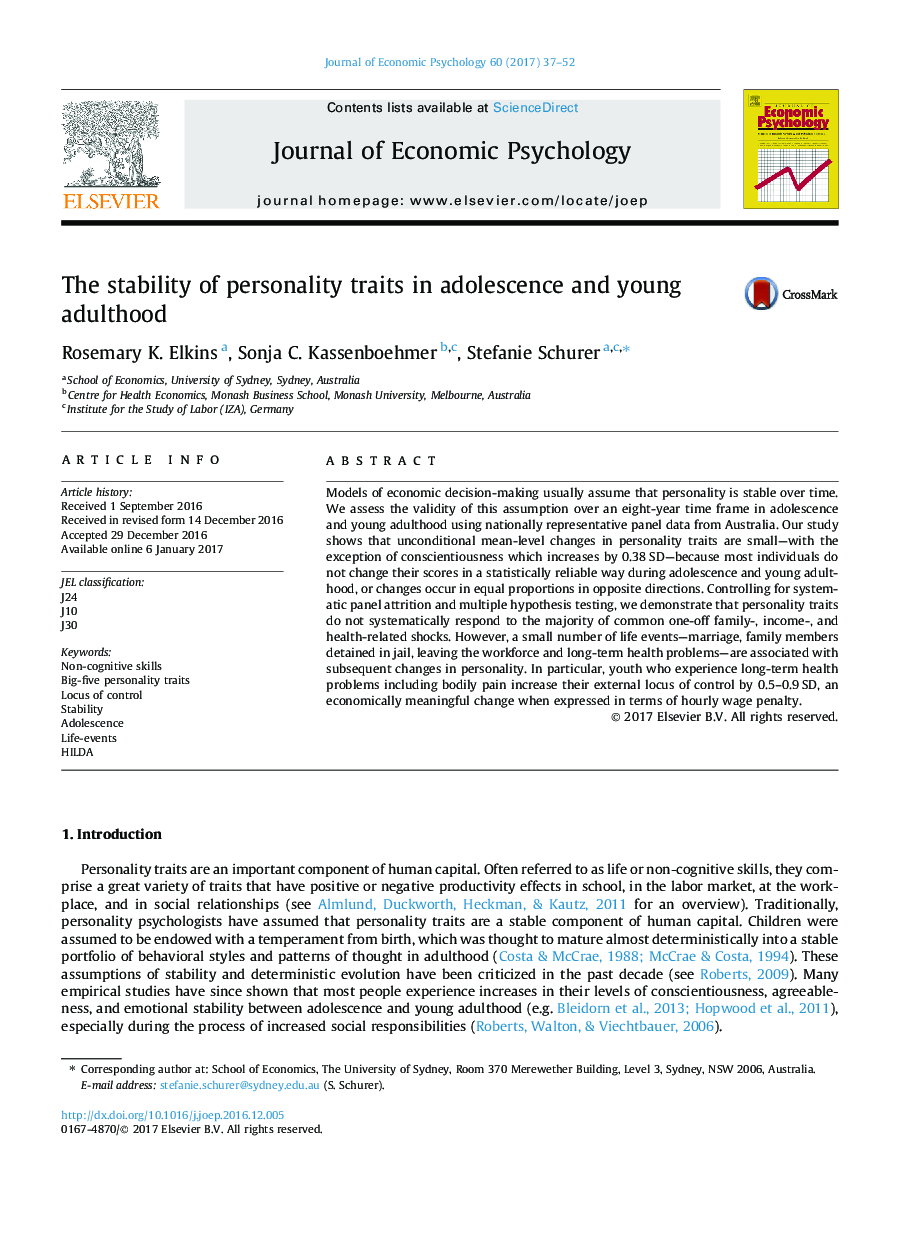| کد مقاله | کد نشریه | سال انتشار | مقاله انگلیسی | نسخه تمام متن |
|---|---|---|---|---|
| 5034751 | 1471706 | 2017 | 16 صفحه PDF | دانلود رایگان |
- Mean-level changes in most youth personality traits are small over an eight-year window.
- Conscientiousness scores increase strongly in adolescence and young adulthood.
- Most common one-off life events do no impact personality development.
- Repeated health problems, including pain, increase external control perceptions.
- The impact of chronic health problems is economically meaningful.
Models of economic decision-making usually assume that personality is stable over time. We assess the validity of this assumption over an eight-year time frame in adolescence and young adulthood using nationally representative panel data from Australia. Our study shows that unconditional mean-level changes in personality traits are small-with the exception of conscientiousness which increases by 0.38Â SD-because most individuals do not change their scores in a statistically reliable way during adolescence and young adulthood, or changes occur in equal proportions in opposite directions. Controlling for systematic panel attrition and multiple hypothesis testing, we demonstrate that personality traits do not systematically respond to the majority of common one-off family-, income-, and health-related shocks. However, a small number of life events-marriage, family members detained in jail, leaving the workforce and long-term health problems-are associated with subsequent changes in personality. In particular, youth who experience long-term health problems including bodily pain increase their external locus of control by 0.5-0.9Â SD, an economically meaningful change when expressed in terms of hourly wage penalty.
Journal: Journal of Economic Psychology - Volume 60, June 2017, Pages 37-52
